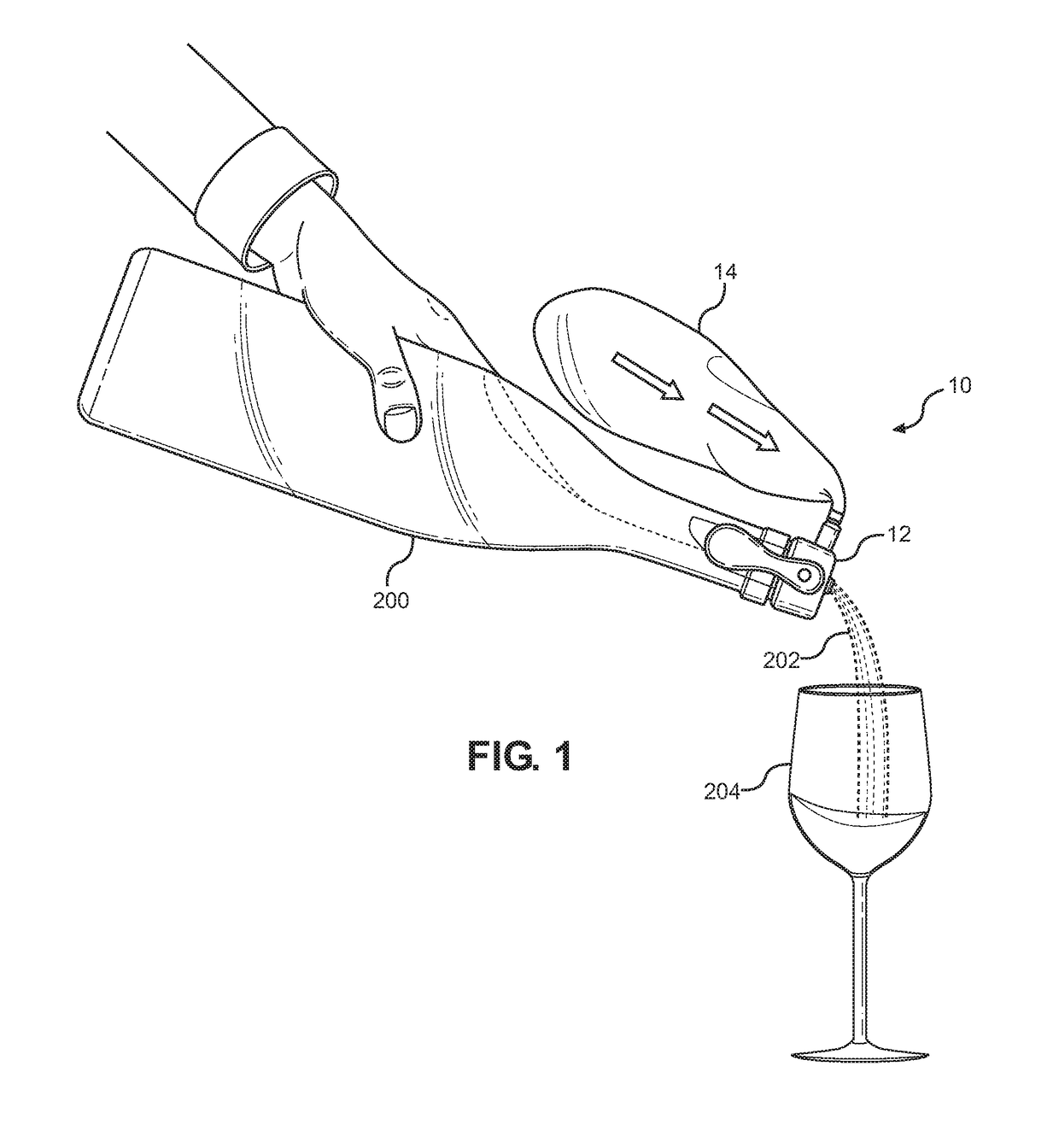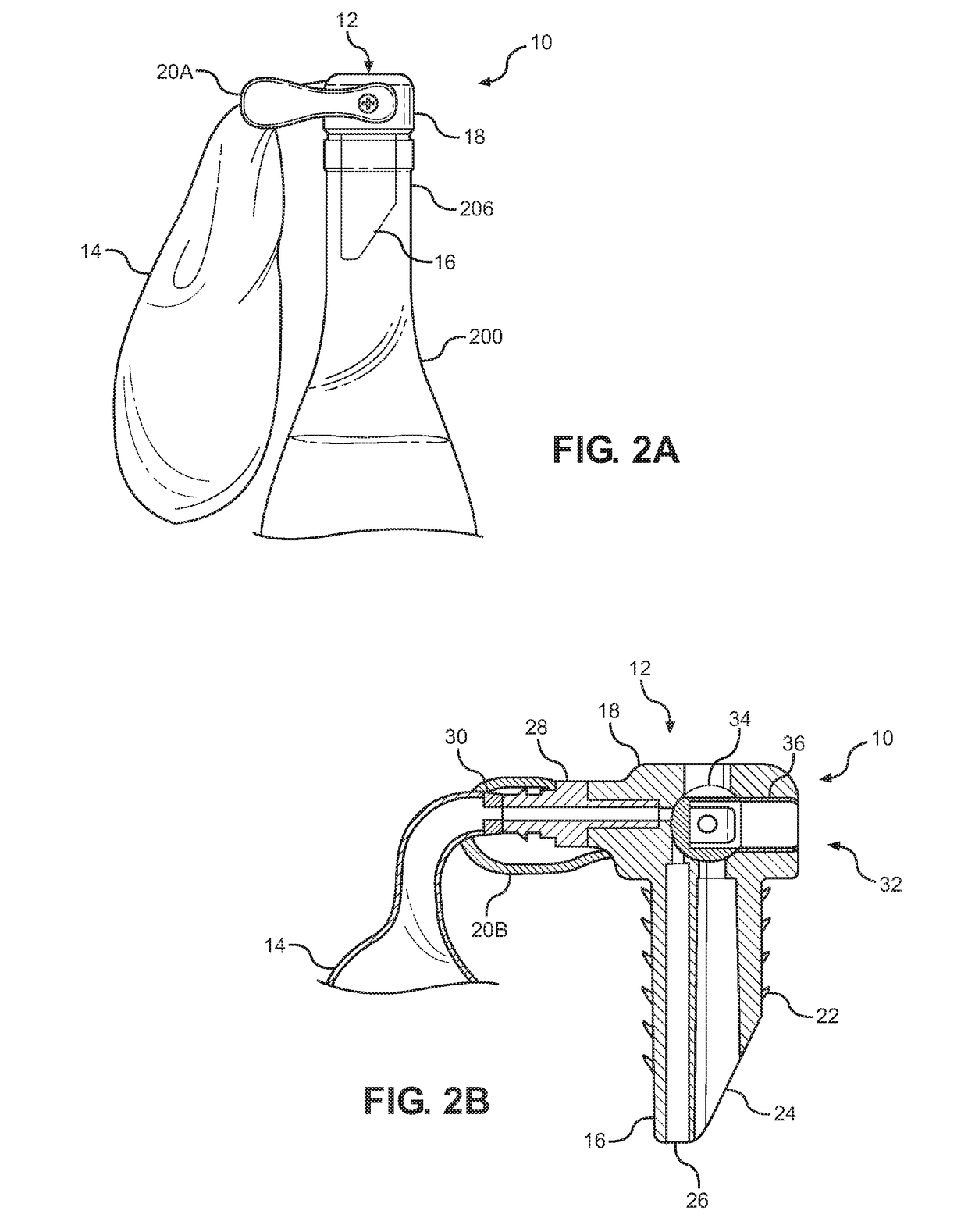System and method for preserving wine and other perishable substances
a technology of wine and perishable substances, applied in the field of preserving consumable liquids and other substances, can solve the problems of affecting the taste of wine within hours of oxygen exposure, wine is susceptible to degradation by an increase in acidity and spoilage, and most prior art attempts have failed without expensive and complicated pressurized systems, etc., to avoid the disadvantages of structural and hygienic effects, avoid the effect of structural and hygienic disadvantages, and ensure the effect of us
- Summary
- Abstract
- Description
- Claims
- Application Information
AI Technical Summary
Benefits of technology
Problems solved by technology
Method used
Image
Examples
Embodiment Construction
[0075]The system and method for preserving wine and other perishable substances disclosed herein is subject to a wide variety of embodiments. However, to ensure that one skilled in the art will be able to understand and, in appropriate cases, practice the present invention, certain preferred embodiments of the broader invention revealed herein are described below and shown in the accompanying drawing figures.
[0076]Looking more particularly to the drawings, a volumetric displacement preservation system according to the invention is indicated generally at 10 in FIG. 1 where the volumetric displacement preservation system 10 is depicted in use dispensing a volume of liquid 202 from a storage vessel 200 with an open inner volume containing the liquid 202 into a recipient vessel 204 for consumption or use. In the present example, the storage vessel 200 is a wine bottle 200, the retained liquid 202 is wine 202, and the recipient vessel 204 is a wine glass 204. However, it will be understo...
PUM
| Property | Measurement | Unit |
|---|---|---|
| volume | aaaaa | aaaaa |
| volume | aaaaa | aaaaa |
| volume | aaaaa | aaaaa |
Abstract
Description
Claims
Application Information
 Login to View More
Login to View More - R&D Engineer
- R&D Manager
- IP Professional
- Industry Leading Data Capabilities
- Powerful AI technology
- Patent DNA Extraction
Browse by: Latest US Patents, China's latest patents, Technical Efficacy Thesaurus, Application Domain, Technology Topic, Popular Technical Reports.
© 2024 PatSnap. All rights reserved.Legal|Privacy policy|Modern Slavery Act Transparency Statement|Sitemap|About US| Contact US: help@patsnap.com










